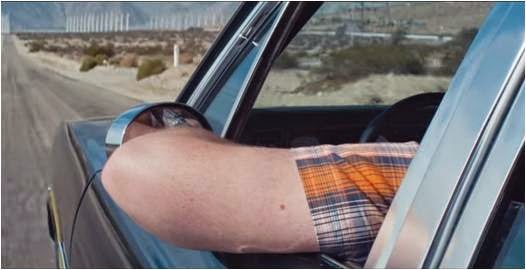What exactly is a “Call to Action?”
In the sales world, a Call to Action (or CTA…sales people have to use
acronyms) is a word or phrase that urges others to take immediate action, as in
“Write now!” “Call now!” or “Click Here!”
It’s the punch line after the sale pitch.
I use CTA phrases all the time in my blogs. “Wear sunscreen!” “Get checked!
“Be sun safe!” Of course, my
calls to action do not necessarily result in a prize or reward, but they do
attempt to inspire some type of action on the reader’s part with regard to
melanoma awareness and sun safety.
The Surgeon General issued a Call to Action today. His website states that a call to action is
“a science-based document to stimulate action nationwide to solve a major
public health problem.” When the Surgeon
General issues a CTA, it’s serious. This
is only the 10thth CTA that the Surgeon General’s office has issued
in the 21st century! Previous
calls to action include preventing suicide, obesity and underage drinking and
supporting breast feeding.
Today’s Call to Action is to Prevent Skin Cancer. I know you’ve read about it. Its big news in melanoma nation and is being
covered by all major news organizations. (In case you missed it, here's the Executive Summary) I was fortunate to learn last night about the web broadcast of the Surgeon
General’s announcement this morning. The
atmosphere I witnessed was nothing short of electric and optimistic. I’d never seen nor heard of Rear Admiral
Boris Lushniak before, but he made quite an impression. I expected the acting Surgeon General to be
staunch and serious, but he was light-hearted, energetic, and passionate. He’s the type of person you’d want to be your
doctor (he’s a dermatologist). He’s the
type of person for whom you would take action.
All the statistics that I and other melanoma advocates have been spouting
for years were presented. But in this
case, it was the Surgeon General conveying that melanoma is on the rise while
other cancers are declining. It was the
Surgeon General stating that one person dies from melanoma every hour and 6,000
cases of melanoma a year are attributed to tanning beds. It was the friggin’ Surgeon General who
repeatedly stated that “tan skin is damaged skin.” And while people have listened to the
grass-roots efforts of bloggers and Facebookers, ears were definitely perked
today. News organizations acted like
this was breaking news. The true
breaking news is that they are finally listening!
The Surgeon General’s office also had a conference call with
“stakeholders” in the afternoon. I admit
that I snuck into this one on a “borrowed” pass. When I called, I gave my name, and when asked
for my “affiliation,” I stated that I am a skin cancer awareness blogger. I thought for sure I’d be kindly told this
was invitation only, but to my surprise, I was in for the listening. There was no news different than the morning’s
announcement, but it was just as exciting.
Rear Admiral Lushniak addressed that many were afraid that the Call to
Action would get lost in the pile of hot news stories today. Ebola virus. The Gaza Strip. Ukraine.
However, he was happy to report that his time between the morning’s
announcement and the afternoon conference call was packed with requests and
interviews. “We are breaking news and
people are hearing our call to action!”
Going back to the Call to Action…what does it mean for me and you? It means we need to take action. We have done our part by making people aware
of melanoma. While we should never stop
that campaign, it’s now time to take action against melanoma. Attend a fundraiser. Write your government representative, whether
national or your neighborhood home owner’s association and petition for more
umbrellas at the pool. Encourage the PTA
to install shade structures on the playgrounds.
Ask the school board to reconsider their policy on sunscreen use for
kids. Demand local coupon flyers refuse
to post tanning salon discounts. Organize
a church or civic event to buy sunscreen for financially-strapped
families. TEACH YOUR CHILDREN!
Answer the Surgeon General’s Call to Action to Prevent Skin Cancer!









